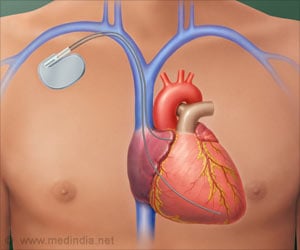Specific ingredients in e-cigarette liquids promote arrhythmias (irregular heartbeat) indicates there is an urgent need for more research.

Cardiac Impacts of Inhaled E-cigarette Aerosols
They found that for all e-cigarette aerosols, the animals’ heart rate slowed during puff exposures and sped up afterwards as heart rate variability declined, indicating fight-or-flight stress responses. In addition, e-cigarette puffs from a menthol-flavored e-liquid or from propylene glycol alone caused ventricular arrhythmias and other conduction irregularities in the heart.‘Some cardiac effects of e-cigarette ingredients are similar to or worse than conventional cigarettes.’





Conducted in collaboration with Daniel Conklin and Aruni Bhatnagar, professors in the UofL Division of Environmental Medicine, this work adds to a growing body of research on the potential toxicity and health impacts of e-cigarettes reported by the American Heart Association Tobacco Regulation and Addiction Center, for which UofL serves as the flagship institute. "The findings of this study are important because they provide fresh evidence that the use of e-cigarettes could interfere with normal heart rhythms -- something we did not know before," Bhatnagar said. "This is highly concerning given the rapid growth of e-cigarette use, particularly among young people."
As e-cigarette use has grown nationwide, the potential advantages and harms of vaping have been debated. Since vaping does not involve combustion, it exposes users and bystanders to little if any carbon monoxide, tar or cancer-causing nitrosamines compared with conventional cigarettes. However, e-cigarettes can deliver aldehydes, particles and nicotine at levels comparable to combustible cigarettes. Vaping might help smokers quit combustible cigarettes, but the appeal and addictiveness of e-cigarettes may encourage youth to vape amidst unknown long-term risks or take up smoking. More than 25% of high schoolers and 10% of middle schoolers in the U.S. reported using e-cigarettes before the pandemic.
Additional research by Carll and Matthew Nystoriak, an associate professor of medicine at UofL, to determine the effects of vape flavorings on the heart recently received $3.6 million in research funding from the National Institutes of Health.
Source-Eurekalert















